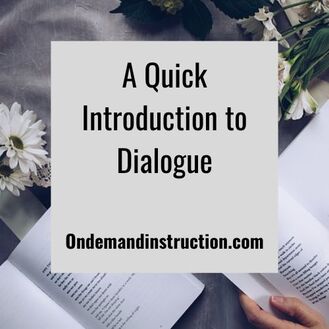 Writers use exposition to introduce their characters and reveal information about them, and they can also use dialogue. By putting characters into situations where they have to communicate, negotiate, and work through questions, we can show readers more depth to our characters. Not only that but we can show how our characters grow over time, just as people grow by communicating with others. When creating dynamic characters, we want to show different ways that our characters interact and change, and by demonstrating self-question, verbal debate, and social diplomacy, we can do that more thoroughly than with exposition alone. Rules of Dialogue When writing dialogue, follow these rules for accurate use of grammar, content, and punctuation. One character speaks in each paragraph. To demonstrate that another character is speaking, create a new paragraph. Indent each paragraph just s you would for exposition. Spoken dialogue should have quotation marks before the first work and after the last word. All punctuation related to the dialogue goes inside of the quotation marks. If a character speaks for longer than one paragraph, use one set of quotation marks, one when the character begins speaking and one when the character stops speaking. Use an em dash to show when a character is being interrupted while speaking. Include a speaker’s tag after the speech not before. Internal monologue (a character thinking to themselves without speaking) should be italicized not quoted. Considerations when Writing Dialogue
When writers use multiple pages of exposition without adding in dialogue, the effect on readers can be overwhelming. When writers use multiple pages of dialogue without adding in exposition, the effect on readers can be distracting and make it hard for readers to keep track of the story. Creating balance on the page allows your reader to enjoy the story without being overwhelmed by too much content or distracted by too little. Since every story is different, you may need to feel out the story and see how much dialogue can be written together before it needs to be broken up with exposition. Writing with dialogue creates white space. Readers tend to enjoy writing that contains white space because it gives the illusion that they are reading faster than they actually are. You can identify white space by opening any book around you. A page that has heavy paragraphs full of thick sentences that stretch from left margin to right margin is one with little white space; this lack of white space creates the illusion that the writing is heavier and takes more effort to read. Some writers use white space as a way to make their readers enjoy the writing more.
0 Comments
 Writers use two structural techniques to drive a story forward: the character driven story and the plot driven story. The character driven story connects the reader to the character, and that connection needs to be made almost immediately. Once the reader flips through a couple of pages, they need to be intrigued enough by the character that they have a deep desire to keep reading. If the reader doesn’t connect quickly with the character, they may lose interest early on and abandon the story. Novice writers oftentimes depend on the introduction of physical characteristics, assuming they will give the reader an image of the character and that will be enough to catch the reader’s attention. It never is enough, because readers don’t choose to read because of a character’s eye or hair color; rather they choose to read a story because they find the character interesting enough that they want to know what will happen to them. Overly Simplified Characterization Take a look at this example of this character introduction. Margaret was tall for her age. She was already 6 feet tall and looked even taller because she was so skinny. Her long brown hair hung down her back in a braid. She had blue eyes and freckles on her nose and cheeks. Margaret had a cat named Cushion because she was so soft and squishy. Introducing a character with physical descriptions like height, weight, and features is typical of new writers, but this type of characterization does not engage the reader. To successfully intrigue the reader to want to continue reading, the writer needs to give the reader a reason to connect with the reader as soon as possible. Unfortunately, eye and hair color won’t do that. If a character descriptor is not relevant to the story, then it is unnecessary. Engaging Characterization Descriptions Take a look at another example. This is the introduction to David Copperfield by Charles Dickens. In the first two paragraphs, the reader learns about David Copperrfield, the character. Whether I shall turn out to be the hero of my own life, or whether that station will be held by anybody else, these pages must show. To begin my life with the beginning of my life, I record that I was born (as I have been informed and believe) on a Friday, at twelve o’clock at night. It was remarked that the clock began to strike, and I began to cry, simultaneously. In consideration of the day and hour of my birth, it was declared by the nurse, and by some sage women in the neighbourhood who had taken a lively interest in me several months before there was any possibility of our becoming personally acquainted, first, that I was destined to be unlucky in life; and secondly, that I was privileged to see ghosts and spirits; both these gifts inevitably attaching, as they believed, to all unlucky infants of either gender, born towards the small hours on a Friday night. The first paragraph is very unique. We get no physical description of Copperfield at all, but we do get a sense of his viewpoint on life. For what starts out as a unique introduction, we find out he was both at midnight. That is not particularly interesting quite yet, but it does tell us that his birth must be unique, because he chose to tell this story in first person point of view. In the second paragraph, we get the foreshadowing and character revelation. A wise women predicted that Copperfield would be unlucky in life and that he would see ghosts. At this point, the reader can connect with Copperfield as a character. All of us have felt unlucky at some point in our lives. We have all wondered, especially during a span of bad luck, that we must have been born under the wrong stars or the universe had it out for us. Copperfield’s birth was predicted from the start to be questionable, and that alone makes him an interesting character. When readers have an interesting character that makes them wonder what will happen to them and makes them care, they keep reading. Reveal Character Through Dialogue Just as writers can introduce a character through description that connects with the reader, so writers can use dialogue. The words, phrases, and mannerisms a character uses when they speak can tell the reader a lot about the character. And if readers know that a character is interesting, they can connect with the character and engage with the story. In the first lines of Jane Austen’s Pride and Prejudice, readers get a sense of who Mr. and Mrs. Bennet are. These are not the protagonist or antagonist, but they are characters closely connected with the protagonist, Elizabeth Bennet, and they set up the scene to introduce the protagonist. It is a truth universally acknowledged, that a single man in possession of a good fortune must be in want of a wife. However little known the feelings or views of such a man may be on his first entering a neighbourhood, this truth is so well fixed in the minds of the surrounding families, that he is considered as the rightful property of some one or other of their daughters. “My dear Mr. Bennet,” said his lady to him one day, “have you heard that Netherfield Park is let at last?” Mr. Bennet replied that he had not. “But it is,” returned she; “for Mrs. Long has just been here, and she told me all about it.” Mr. Bennet made no answer. “Do not you want to know who has taken it?” cried his wife, impatiently. “You want to tell me, and I have no objection to hearing it.” The last line in the chapter introducing Mrs. Bennet reads: The business of her life was to get her daughters married: its solace was visiting and news. From the first page of the story, the reader knows what is going on and who is involved in the action. This is a marriage story, but it does not start out as a love story. No, this is a story about pragmatic marriage, the social agreement about financial and social stability not the coupling of people in love. At least, that’s how Mrs. Bennet begins her speech about the exciting Mr. Bingley who moved into the neighborhood. Since he’s both single and rich, Mrs. Bennet is convinced (and tries to convince her husband) that Mr. Bingley will fall in love with one of her daughters and marry one. Mrs. Bennet’s purpose as a matchmaker determined to connect her daughters is established not only in the foreshadowing first line of the book but in her dialogue, since her only concern is of marriage. What does this tell the reader about Mrs. Bennet? Well, she has not yet met Mr. Bingley and has no idea what kind of person he is, but she is convinced that he will marry one of her daughters for their beauty. Her purpose is to make matches with wealthy men, and her words and descriptions tell the reader that up front. The reader connects with the story, not because she is likeable, but because she has a real, human personality with purpose, drive, and flaws. Setting Up the Character Driven Story
A character driven story must have a strong character to push the story forward. If nothing happens in the story, the reader is likely to disengage from the story and abandon it for another one. So, give your character an engaging description to pull your reader into the story. If the reader is interested in the character(s), even if they don’t necessarily like the characters or identify with them, they are more likely to enjoy them and continue reading. Describe your characters not by their physical features but by who they are on the inside. The Character’s Past Just as every person has a past, present, and future, give your character a thorough story. Spending dozens of pages rattling out every detail of a character’s past will become very boring very quickly. Instead, offer bits of information about the character’s major experiences that defined who they are as an individual. As your reader learns more about the character, their interest should increase, because they become more curious to know more. Internal Story An interesting character has flaws, problems, concerns, and distractions. Just as people are complicated, so should characters be. A character that feels real to the reader is one that has pet peeves, random thoughts, irrational emotions, and inconvenient urges. When a character comes across as being real to the reader, the reader feels more connected to them. A character should have problems, things that bother them, goals they haven’t yet achieved, and personal issues. Including descriptions of these details make the character feel more alive to readers. As you read, ask yourself how the writer is presenting their characters. Reading to evaluate other writers’ techniques can help you become a more sophisticated writer. Then apply those techniques to your own writing. The more interesting your characters are, the more likely your reader will connect with your characters and love your stories. How does a writer write? How does a single person have what it takes (inspiration, skill, talent, work ethic) to become a successful writer? Have you ever been struck by inspiration? Perhaps you weren’t thinking about writing at all. Perhaps you were on a walk, washing the dishes, or paying your bills. Then out of nowhere, the idea for a story came to you. You could picture the story fully written out. The characters interacted with each other in complex scenes that communicated depth of thought and multiple meanings. The setting was lush and exciting, and so alive that any reader would feel like they were living in the pages of your story. The plot moved along at a quick pace, which made the reader want to keep turning pages to find out what happened next. In reality, by the time you got to pen and paper, the story had already started to slip away. Maybe you caught a few words that communicated its essence, but in reality, the story was lost. So, what happened next? Did you forget about the story and move on with your day? Did you try to rewind your memory and recapture the brief visions of the story? Or did you cut your losses and wrote something new? Very few writers have the luxury to write only when inspiration strikes. Most writers have to dedicate set hours, personal energy, and hard work to produce their writing. Just as most of us would be unlikely to work out, eat vegetables, or show up to the office without the external benefits that come with our activities, so it can be a challenge with creative endeavors. Writing is the same. To be able to enjoy and share the finished products of our creativity, we have to write. But, we have nothing to share with others until we have written. So, how does someone become a successful writer? Just as a person cannot run a marathon without months of exercise or fly a plane without extensive training, so a writer is unlikely to be successful without putting in the hard work.
Even more important than talent, inspiration, and natural creativity, hard work will see a writer from brainstorming to publishing the final draft of a story. Inspiration is fleeting and unpredictable. The writer can’t control inspiration, and can’t force it to arrive at a convenient time. What writers can control is their own time. We decide what time to set aside for writing, what supplies we need to write, and who can share our space when we write. The process of writing takes time, so writers must put in the time to produce the polished stories we want to share with our readers, be they family members or thousands of paying readers. Hard work tends to go down more smoothly with strong coffee and bright morning sunlight. Set a schedule to work at a set time each day, even if for just 30 minutes, and your stories will have a better chance of being completed. In 1920, American poet Robert Frost moved his family from a rustic farm in New Hampshire to the Stone House Farm in Bennington, Vermont where he hoped to live his dual life as both a farmer and a poet. His move to Bennington was one of many moves and started a decade when his luck would change. Here, Frost would write one of his most famous poems “Stopping by Woods on a Snowy Evening”, win his first Pulitzer Prize, and receive both a fellowship at the University of Michigan and a teaching offer at Amherst College. By 1920, he was an old poet, since most poets found success earlier in life and Frost was now 46. The man that modern Americans consider to be the most universally-loved 20th century poet was part wanderer, part naturalist, part gambler, and part nostalgic dreamer. The California-born poet would become known as a New Englander who defined America by giving all Americans a way of seeing ourselves in connection to the natural world around us. Our appreciation for nature is one of our shared values. Up to this point, Frost’s professional life had been one of compromise and partial successes in both farming and writing; he sold his New Hampshire family farm with hopes of finding fame in London then later tried his hand at producing everything from chickens to apple trees on his farms. The early years of his marriage were partially-financed by his grandfather, a serious man who disapproved of Harvard as “a drinking place” and wanted Frost to find a footing in New England as a productive, sober citizen. Frost survived by the generosity of others and depended on their recognition of his ability to continue writing. Frost’s Connection to the Land Frost’s ties to the land started in 1899 when a doctor recommended he take up farming as a means to stay active mentally, emotionally, and physically. Throughout his poetry, readers enjoy the theme of personal discovery through time spent outdoors. Frost found himself with one hand on a farmer’s shovel and the other on the poet’s pen, much like many Americans, who are not easily defined by a narrow description by a single occupation. On a warm June day in 1922, Robert Frost sat at his dining room table and drafted the poem “Stopping by Woods on a Snowy Evening”. His deep understanding of the landscape made him particularly well suited to pen this piece, as he was most productive while he was actively farming not when he was surrounded by scholars on a college campus. The dining room of the Stone House is dedicated solely to the poem. On one wall, the poem’s rough draft is painted in black letters with editing marks to indicate places Frost made changes to the original draft. A record-player sits next to the front window with a recording of Frost reading the poem. In the middle of the room, a traditional wood table is surrounded by Windsor chairs in a warm finish, giving the room a feel of what it may have been like when Frost’s family enjoyed dinner in that room. There is a sense of magic to stand in the same space that a beloved writer once stood. To look out the windows, the bask in the natural light, to gaze at the same sights that they would have seen gives one a sense of connection to that writer. Time collapses as we share space with the writers of the poems that we repeat to ourselves in life’s important moments. The Property Frost planted hundreds of heirloom variety apple trees on the Stone House Farm in the decade he lived there. Today, many of those trees have died out from wind storms and severe weather, but horticulturalists connected to the museum are working to propagate the original varieties to continue their lines. Frost’s goal was to plant a thousand trees of unique varieties, suggesting both his dedication to creative farming and his drive to make sense of the natural environment for its own sake. Surrounding the house are seven acres of the original farm. These contain a woodland area of deciduous trees and some of the same cultivars of Frost’s apple trees. There is also a poetry walk behind the house with a natural pathway dotted with plaques with Frost’s poetry and artwork by readers. As visitors walk along the pathway, the poetry and artwork becomes a part of the experience of enjoying the natural surroundings. Robert Frost’s Stone House is managed by Bennington College, an institution that was founded while he lived at the house. They offer tours of the property as well as lectures and events related to Frost, the farm, and the area. No doubt, Robert Frost will continue to be widely read and loved by Americans, as his voice continues to resonate with our shared values. Plan a visit to the Robert Frost Stone House You can read the poem “Stopping by Woods on a Snowy Evening” at the Poetry Foundation. Related Blog Posts
 In June 2022, I visited Plymouth, MA and found it to be a wonderful town rich in history, culture, and literature. I have never been here before, and in fact, my only prior New England experience was in Vermont. As happens with many people, especially Westerners accustomed to being awe-stricken by 120-year old history, I instantly fell in love with New England. Being able to visit places I had only read about in books made the history, the literature, and the places feel truly real for me. To visit Plymouth and talk to the historians there, I was reminded of the incredible stories in American history, the struggles that our ancestors managed, and how these experiences became the themes we still see in American literature. I hope to visit again sometime and dig deeper into the places, the stories, and the people who lived there. Two Ships, One Landing For over 12 years, a congregation of English religious separatists lived in poverty in Holland. They did backbreaking labor and lived in fear of civil unrest, religious prejudice, and ongoing poverty. They left England having been found out as members of an illegal religious group after unsuccessfully attempting to reform the English church to fit their wishes. These religious fanatics were outcasts in their own England and in their adopted country of Holland. They decided to try a new path and sail across the ocean, as few English had done before, and leave Europe altogether for the New World. Their leaders envisioned themselves as the Biblical Jews left Babylon for Jerusalem when they planned to set sail for the New World. They hired two ships, the Speedwell and the Mayflower. The Speedwell took the Puritans from Holland to England to be outfitted before leaving Europe. Only the Mayflower sailed, as the Speedwell sprung several leaks that required lengthy repairs and was eventually left behind. Only the Mayflower sailed and with only 65 Pilgrims of the original 400 Pilgrims. Families were separated, some forever, as they said their goodbyes and sent the fittest of the Pilgrims away. "A flood of tears was poured out. Those not sailing accompanied us to the ship, but were not able to speak to one another for the abundance of sorrow before parting." The Mayflower was only 1600 square feet but housed 65 Puritans and 37 non-Puritan passengers, which the Puritans referenced as “Strangers”, plus about 30 crew. Many of the “Strangers” intended to be let out at the Virginia Colony but were released in Plymouth instead. To put it mildly, the voyage must have been miserable. Not only were the passengers desperately cramped below deck, they were trapped there unable to go above deck where the 30 crew members worked to keep the ship afloat. America Began in Misery and Gratitude Crying babies, moaning sick people, and arguing workmen is what the passengers endured for two months until landing near Cape Cod. Not only that, but a third of the passengers weren’t Puritans. They didn’t share the religious zeal of the original passengers and sought work, resources, and fortune on their voyage. The Puritans and Strangers bickered about everything from resource management to decision making. In an effort to bring peace and organization between the two groups, they agreed to the Mayflower Compact: the first attempt at democratic self-governance in the New World. Then things got much, much worse. When the English passengers arrived, they found frozen ground, below-zero temperatures, and an inhospitable land unlike anything they had seen before. They were unprepared for what came next—disease. Scurvy, pneumonia, and tuberculosis ravaged the passengers and crew alike. Though Captain Jones intended to return to England as soon as the passengers found a settlement site, he couldn’t set sail with most of his crew ill. Nearly half of the people died that winter of cold, hunger, and disease. Thankfully, the Native American Wampanoag tribe provided them with food and instructed them on how to forage in winter. Without that support, it is possible none would have survived. How did this Voyage Affect our Country’s Establishment? When we look at historical events, I think we recognize that deprivation threatened every step of the path for the people who lived them. And I think the challenges that our forebears faced help us to understand how they left the legacy they did. When these English citizens landed on Cape Cod in 1620, they brought with them new ideas, and we can see those ideas in practice in American literature still. This group of people decided they didn’t like what was happening in their government and their government’s official religion. They couldn’t affect change from within the system, so they took their ideals with them and started over in a new place. We see the theme of the new beginning throughout American Literature: new beginnings, starting over, finding your own path, trusting yourself, self-reliance, and sticking to your ideals. The Plymouth Residents Established American Literature The 19th century westward-moving pioneers sought a new beginning as they packed their buggies and headed west in search of land, opportunity, and a fresh start. Little House on the Big Prairie by Laura Ingalls Wilder, My Antonia my Willa Cather, and Undaunted Courage by Stephen E. Ambrose each introduce readers to the idea that in America, we can move, we can start again, and we are masters of our own fates. Second, this is the first time that a group of people decided what their government structure would look like and voted on it. This is the start of consensual government. This is the beginning of modern democracy, where people had a say in what happens, where people vote. This is community government, where no king or lord demanded obedience, but rather people cooperated and compromised to survive. This is revolutionary thought process put into action. In American literature, we see the themes of democracy, participatory government, and compromise throughout our canon. The Federalist Papers by Alexander Hamilton, Democracy and Education by John Dewey, and Democracy in America by Alexis de Tocqueville establish the importance of balancing the needs of the many with the needs of the individual. When the passengers of the Mayflower signed the Mayflower Compact, could they have known that they would spark a different way of thinking about government? Though the first piece of writing in the New World was probably the journals of Captain John Smith in Virginia around 1606, William Bradford’s Of Plymouth Plantation is the first piece of literature to collect American historical events, including those of the Mayflower sailing. Anne Bradstreet wrote the first poems in American literature in her book The Tenth Muse Lately Sprung Up in America; her poem “Upon the Burning of Our House” has stuck with me for 30 years. So, if ever you’re in the neighborhood, pop by the sights in Plymouth, MA. Visit the Mayflower II, which is the ship rebuilt to the specifications and design of the original Mayflower, and you can see exactly how the Pilgrims and Strangers traveled from England to Cape Cod. Stop by the Plimoth Patuxet to walk on through the rebuilt village of Plymouth as it would have looked in the 1620s, where colonists built their first homes as well as a rebuilt village of the Native Patuxet Wampanoag people with a bark house. Burial Hill has been used for honoring the dead since the 1620s, the Howland House which has been standing since the 1660s, and multiple monuments and tours. History and literature have been comfortably intertwined in Plymouth for 400 years and will continue well into our shared future. 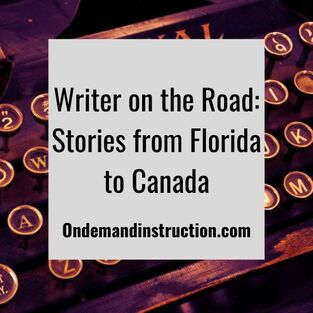 I always wanted to live in a well-traveled family. When I was younger, friends would go on amazing vacations: Hawaii for surfing one year, Disneyland for the rides for winter break, and Killington for skiing. I didn’t grow up like that, but I have made an attempt at traveling as an adult. My favorite destinations have turned out to be the ones that connect with my love of history and literature. When I visit a place with historical or literary significance, it gives me a greater sense of understanding, and I always come home with ideas for stories. When I sat in Robert Frost’s living room, it felt like his poetry made more sense to me. When I met the four dozen cats living at Ernest Hemingway’s Key West house, I understood the draw that kept Hemingway there and the vibrant energy of the town itself. And when I stood on the North Bridge in Concord, where the “shot heard around the world” was fired, I felt more connected to my country and to my history as an American. Writing is a Solitary Profession As writers, we understand that ours is a solitary profession. We accept that we create alone. We know that our coffee pots and our cats are oftentimes our only companions while we compose. But we also recognize that when we write, we write about people, about the human condition, and about human nature. We write about the conflicts we experience: within ourselves, with nature, with our world, and with each other. We know that we must understand people and the world to be able to write about it. We may write alone, but we live with others. So, What is Coming? In the coming months, I would like to share some of my recent literary and historical travels with you. Just before the pandemic, I visited Earnest Hemingway’s house in Key West. This summer, I visited the homes of Louisa May Alcott, Ralph Waldo Emerson, and Henry David Thoreau in Concord. And before that, I sat in Robert Frost’s living room, where he wrote “Stopping by Woods on a Snowy Evening”. My historical tours have taken me along the northern path of all five Great Lakes, where we got to stop at the very point where my great-great-great-great grandfather entered the United States and never returned to Canada. I got to visit the wonders of the west, including: Highway 66, the Grand Canyon, and the Joshua Trees. These places helped me to make connections between human development, the changing landscapes, and the consistencies of the human condition.
Creative people tend to be curious people. I hope you enjoy the stories to come in the new year. And I hope you are able to carve out a little time to leave your desk now and then and observe the world up close.  Do you need to focus? Then listen up! By chance, have you noticed how difficult it is to focus these days? Climate instability, political threats, social upheaval, and everyday life stress got you down? Sometimes the array of devices within reach make it difficult to focus. Or how about the challenge that every writer faces—what do I write about today? All of these things can create situations where it is difficult, and sometimes impossible, to focus long enough to write anything. What can a writer do to improve focus? I tend to get distracted myself, especially when it comes to my writing. My writing is my personal time that I spend for myself. I don’t make money or gain fame or rub elbows with celebrities because of my writing; it’s what I do to be creative, to feel like my true self. Sometimes, that time is hard to protect. My kids, my job, and my many responsibilities tend to push into that time in an attempt to take it over. Unfortunately, I can’t take focusing for granted. I have to set myself up for success or my mind will wander. Plug your ears to block out the world There are a few audio tools that writers can use to support their mental focus. For years, educators have recommended that students listen to quiet classical music while studying. The music creates a background noise that isn’t distracting in itself but allows the writer to have something going on in the background. If you know anyone who sleeps with a fan running or a white noise machine, the idea is similar. You are creating a soothing background sound that allows the mind to focus elsewhere—on writing or on relaxing. People who work with attention deficit and hyperactivity disorder have suggested that giving the brain something to block out encourages focus. When the brain is in overdrive and scattered, giving it something to push against allows it the energy to focus on a single task. Otherwise, focusing on one task is too challenging. Some writers wear headphone or earplugs without any sounds, and that can be a technique that works for people who don’t necessarily need to block out sounds to gain focus but just need to block out sounds. When you’re writing at home, the house can be filled with distracting sounds—the dishwasher running, the neighbor’s dog barking, and the phone ringing. Sometimes a cheap set of earplugs can block out the din of the world so writers can get a few words written. What should writers consider listening to? People are drawn to different types of music, of course. And your personal tastes in what you enjoy listening to while driving may be totally different than the music that helps you focus to write. Writers oftentimes need to try out a couple of different options before finding the one that works best to get the focus they need, and what works today may be a bust for your next writing session, so you may need a couple of different options. Mellow jazz Jazz is another style that works well for some writers. Of course, jazz can get pretty wild, feature louder horns, and include singers. For many writers that would be too much going on and create a distraction rather than solve the problem. If jazz is your thing, look for a playlist with quieter, mellow jazz that you can play in the background while focusing on your writing. Quiet classical music All classical music is not alike. Some can be pretty raucous (Beethoven, Vivaldi) and some is on the lighter side (Mozart). Find a style that suits your listening and give it a try. Personally, I like string instruments like cellos and violins but not pianos, so I look for classical music that I can play in the background that I’ll enjoy the sound of without finding it annoying. Lofi playlists I had not heard of Lofi until recently. This is an electronic music style without lyrics. If you search YouTube for lofi, you’ll find playlists with millions of views. Younger people tend to love Lofi playlists because they include not just the background music that helps them focus but many also include a video with pleasant imagery. One called Lofi Girl on YouTube shows a cartoon-style drawing of a woman who drinks tea and pets her cat. The combination of relaxing music and imagery can be just the right thing to support a writer’s focus. Nature sounds When my daughter was young, she would fall asleep to the sound of birds chirping in the forest. Many people use the sounds of waves crashing, rain falling, or birds chirping to relax, focus, and improve their environment. Studies have shown that a short time in nature can significantly improve people’s moods and mental health. So, why not use a recorded version to focus better while writing? What tends not to work? As luck would have it, not every type of white noise or music will support a writer’s need for focus. Music with lyrics tends to be distracting rather than focusing. When the brain is inputting words from one source, the music, it can be too challenging to compose words for a story. Our poor brains can only handle so much and both inputting and outputting words at the same time is just taxing for the majority of us. Loud music is another one that tends to backfire. Though any kind of music can be turned up to 11, your writing sessions may not be the best time to try that. Sometimes people confuse the idea of listening to music with listening to loud music. When the music becomes the focal point of the moment, then good writing is less likely to take place. Finally, really anything with words can be overstimulating for most writers. Spoken word, documentaries, podcasts, radio news, and lectures are great entertainment when you’re driving but can be a right mess when you’re writing. Too many words are sometimes just too much. Try out a couple of options and see what works for you. If you are the type of person who loves to rock out to Beethoven at high volume on the highway, maybe try quiet nature sounds for your next writing session. Plug in a set of headphones and see if that improves your focus and helps you get more words written on the page. Related Blog Posts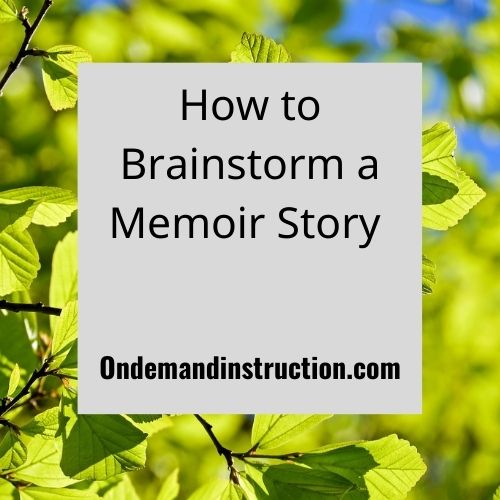 When we sit down to write about our lives, the task can feel daunting. Writing about an entire life can make us feel like the starting point is elusive. Do we begin with birth? Do we start before that with our parents, grandparents, or ancestors? Do we begin with our first memory? It can feel like there is no easy answer. Writing a memoir story is a unique experience. Our memories are usually spotty with some of the details easily accessible at the forefront and others lurching in the murky background. This can be a real challenge for memoirists since we both want to capture our stories but also want to share them in an honest and factual manner. That is not always an easy task. As writers, we experiment with different techniques to begin a story until we find the methods that work for us as individuals. One writer may depend solely on a brainstorming technique to prepare, whereas another one may have a series of rituals including an early morning walk, an image search, and rereading yesterday’s writing. Over time, we figure out what works and stick with our methods so that we can be productive. Considering the greatest frustration for all writers is the blank page, we all want to get words on the page as quickly as possible. When writers begin collecting their personal stories, the process can be rocky at the start, but writers who stick with it will find that the process becomes easier with time. Try one brainstorming method and see how well it works to get a story on paper. If you struggle, then try a second one and a third until you find a brainstorming technique that works for you. As with all challenges, facing it head on and persevering toward the goal will get you past the hard parts. Words List Some writers are particularly language-oriented. They think of individual words as having significant importance. These writers may compose poems or song lyrics in their creative time and tend to find that individual words can trigger thoughts, memories, and emotions. Brainstorming a word list can help connect a writer with a memory that can transform into a story. The words can be used to tap into the memories themselves and can also be used in the story. Example word list related to a memory of my summer when I was 7: willow tree swing, grasshoppers, yellow bikini, fireflies, fire pit, hot dogs and marshmallows, bedtime stories, red Converse tennis shoes. If I used the word list method, the words I brainstormed help me remember what I did that summer. I can then use those words in my story, so if I’m a language-oriented writer, this can really get me started. Visualization Close your eyes and picture yourself going back in time. Think back to the moment you met your best friend. Where were you? What was the weather like? What were you wearing? What were your plans for that day? What were you thinking about? For many writers, when they can get a mental picture of an experience from their past, they can fill in the details. One of the fascinating things about memory is that once a person opens a window into the past, more memory reveals itself over time. A person may start by recalling the time they met their best friend on the playground at school, then by visualizing this memory and going through the events, one minute at a time, they can unlock additional details of what happened. For writers who enjoy meditation, mindfulness, and visualization, this can be an enjoyable story technique. Collect Images We live in a highly visual culture. Just 20 years ago, our phones were focused on sound, but today they are almost completely operating on visuals. Our lives have changed with each passing decade to being less multi-sensory and more visual. The more time we live indoors in front of screens, the more dependent we are on our ability to interpret visual information and less on our other senses. As visual people, we can use aspects of that to our advantage. If you are a collector of photographs from vacations, life events, and celebrations, then you may have a treasure trove of visual content. You can use this as a starting point for creating your stories. Take out the photographs that you have from elementary school and from high school. Take out the photos from your young adult life and from midlife. As you collect these wonderful images, take the time to sort them then study them in a way that helps you unlock the stories behind the visuals. Since we are a visual culture, we can use photos to tap into our memories and collect details that we can use in our memoir stories. Collect Objects and Artifacts Photographs are not the only tools writers can use to connect with their memories. Any type of artifact can do the job as well. Think about the types of things you may have related to your life memories: fabric samples, ribbons, awards, certificates, notes and cards, licenses, and artwork. Like when a writer uses a photograph, accessing an artifact from one’s life, a writer can tap into their memories, open up more details on their memories, and use the artifacts as part of the presentation. Many memoir stories include photographs and artifacts within the stories. Adding imagery can help the writer to collect enough information to tell a story in the first place and can help get the full story communicated to readers. Conduct Interviews One of the wonderful aspects of writing memoir is that writers aren’t limited to their own experiences. We live our lives around other people. Our connections to friends, family, and colleagues give us rich fuel for stories of interconnected lives. Some memoirists begin their memoir writing journeys by interviewing people in their lives, particularly their family elders for ancestral and family stories. Interviewing others is a great way to start, because it takes the pressure off of the writer to collect their own stories. Instead, writers get to focus on the writing process for others’ stories, which can make storytelling feel more accessible, especially for writers who may be overwhelmed or blocked. Memory Snippets Oftentimes, writers have bits of memories but they don’t necessarily add up to an entire story. Collecting these memory snippets can create a resource pool of information that can be used in writing memoir stories. Consider using post-it style notes or notecards for collecting and cataloguing these memory snippets. A memory snippet might be as small as one sentence. Memory snippets might include things like: the summer we saw David Bowie in Denver; the patent leather shoes when I was 10; my tenth birthday when I was sick; the day dad crashed his motorcycle. Hopefully, there is one brainstorming technique that can support your writing practice. Once writers get a story or two on paper, more stories tend to come over time; it gets easier. As well, the more time writers spend accessing memories, the more memories come to light. This can be a blessing since writers have more information to access from their stories, but it can also mean that more time is needed on one’s memoir project. If you find that some of these techniques do not appeal, that is OK. Stick with the ones that work for you. Writers are all different and tend to gravitate to one method over another. Related Blog Posts
 People who have spent time writing, regardless if they wrote poetry, short stories, or personal essays, have found that the act of writing benefits the writer as much as it does the reader. Though we tend to view writing as a communication tool from reader to writer, one of its greatest benefits is supporting the writer’s well-being. Set Aside Time to Write When we write, we give our thoughts time. Time is such a luxury these days, as the technologies that were supposed to make life easier have shortened our attention spans and kept us perpetually distracted. When we put life on hold to write, we dedicate time to our thoughts and give them the space to flower. Writers have known that the writing process allows for time to think through one’s questions with both depth and breadth. Novelist Flannery O’Connor suggested, “I write because I don’t know what I think until I read what I say.” Writing is rarely quick and easy. It’s a slow process that gives the writer opportunity to shut off the world’s chaos and focus. When we do this, inevitably we take care of ourselves. Life has become so disordered that people are oftentimes exhausted just getting through the day. Taking time to quiet the world around us can allow for a break to sit with our thoughts, a habit that writers have used for centuries to regroup and reconnect with oneself. Journaling after Stressful or Traumatic Events Every person has experienced stress or trauma at some point. We may have experienced the loss of a friend or family member, the loss of wealth or stability or status, or the loss of place when our homes or communities change for the worse. Loss can wreak havoc on people, and the aftereffect can present itself in a variety of ways. Some people experience heightened feelings of stress, weight change, affected memory, or declining physical health. For others, the effects can be as significant as mental health illnesses like depression or anxiety. Some writers address their personal challenges by writing about them. Starting a journal where writers chronicle their hardships can help by putting words to the feelings and details to events gone awry. The process of journaling to express the depth of thoughts surrounding personal experiences can be incredibly therapeutic for writers. Expressive Writing There are two styles of writing recommended to support mental and emotional wellness after challenging times: expressive and reflective writing. With the expressive style, writers separate themselves from their writing by collecting their experiences as events separate from themselves. They write about their pain, trauma, and stressful situations without any editing or filters. The events and pain can become separated from the writer with time, as writers capture the details of events while looking at themselves as though they are characters within a story. How do you start expressive writing? Choose a painful incident and write about what happened without stopping. Write about what happened, how it felt, what it made you think of, and what effects it had. Write it all down. Then tear the paper out of your notepad and throw it away (or burn it or shred it water and put it in the compost bin). The point behind expressive writing is that you don’t judge yourself, your experiences, or your feelings. You just put it all to paper then destroy it. Evidence suggests that engaging in expressive writing can alleviate chronic physical and mental pain if done on a regular basis. Some people write every day and some multiple times a day. Expressive writing can be cathartic if you’re willing to give it a chance. Reflective Writing Reflective writing is similar in that the writer looks to the past for incidents to write about. But there is more license to analyze the past. With reflect writing, we look back to the past to see what happened, but rather than re-experiencing it, we figure it out, we break it apart, and we evaluate it so that we understand it. When we reflect, we are not the same people from the past. Today, we have new skills, experiences, and knowledge to use to rework our former selves. When writers reflect on their previous experiences, they are writing for themselves not to share with an audience. The purpose isn’t to communicate an idea to a reader but to process experiences, emotions, and information with the intention of making sense of them to the writer. Anytime we can turn something from emotional to logical, we tend to feel relief. Rewrite Your Experiences When writers reach a point where they are emotionally able to face their past experiences with relish, they may want to try rewriting them. In all likelihood, you have a dozen incidents from your life where you replayed the event on repeat in an attempt to figure it all out. Well, when you write about it, you can do just that. Think back to an incident that did not go in your favor. How could it have gone differently? What series of events could have changed to have made you the victor rather than the victim? What missteps did you take that you would like to redo? Once you have the original incident and its more favorable outcome in mind, rewrite the story. Make yourself into the hero of the story. Change the things you said. Change the things other people said or did. Take this old incident that turned out poorly in real life and rework it so that it’s a moment of success in your life memories. Writers who rewrite their experiences can sometimes feel like they’ve taken back the control they lost in those incidents and regained a sense of confidence. Writing serves a dozen different purposes. We can write to share information and stories with a reading audience. And we can write for ourselves. The writing techniques we use can help us lessen the damaging effects that stress and trauma can leave in their wake. By writing about our lives, we can engage in a kind of healing that just might make life a little bit better. Related Blog Posts
 Oftentimes, writers are able to draft the first-version of a story without a problem. They collect the characters, the plot, and the setting on the page, but when they read that first draft, it sometimes feels dry and dull. The reality is that the first draft often falls flat. Once writers get the first draft done, the next step they take is incredibly important. If you assume the first draft is the best you can do and give up, then you lose the opportunity of crafting a truly lovely story. But, if you take another look at the story, you can edit and revise that first draft into a masterful piece of writing. Regardless of the type of story (memoir, science fiction, etc.), writers try to achieve common goals: engage the reader throughout the story, capture their story’s essence, and create a piece that reflects the writer’s skills. There are a few tools writers can use to achieve all of these goals. As we revise our stories from the first drafts to the polished drafts, we can use literary devices to improve the writing. What are literary devices? Literary devices are structures, techniques, and practices writers use in non-fiction and fiction writing as well as poetry and screenplay. Literary devices are the building blocks of literature that engage readers, bring stories alive, and turn writing into an art form. Having a basic understanding of literary devices can help writers change their writing from dull to delightful. Metaphor A metaphor is a comparison of two things; it makes a direct comparison. Typically, the two things being compared are otherwise unrelated, and the metaphor does not use the words “like” or “as”. The metaphor is one of the most common literary device; it tends to be easy for readers to decipher and enjoyable for writers to employ. Examples The grove of oak trees was an impenetrable fortress. Sheila was a smart cookie. When we say that the grove of oak trees was an impenetrable fortress, we are not literally saying that the trees had transformed into an actual fortress, but rather than the trees were so difficult to get through they had might as well be a fortress. And when we say that Sheila is a smart cookie, we are not saying she is a baked good, but rather that Sheila is a smart person. Simile A similar is a comparison between two things using the words “like” or “as”; it makes an indirect comparison. The simile is similar to a metaphor in that it makes a comparison between two things, which typically are unrelated. Like the metaphor, the simile is a common literary device, is easy to use for writers, and easy for readers to decipher. Examples My dog shuffles like an old man. The sleeping cat was as a ticking time bomb. When we say the dog shuffles like an old man, we’re comparing the way the dog walks with the way some older gentlemen may walk. Though the two creatures, the dog and the man, might not be compared in normal circumstances, their manner of walk is compared here. When we compare the sleeping cat with the time bomb, we are not saying the two are exactly the same. Rather, we are saying the cat is as delicate as the bomb. Likely, when the cat wakes up, she would be as dangerous as a bomb. Imagery Imagery is a writer’s technique use of sensory details to describe something. Writers can use imagery in any type of writing: poetry, non-fiction, and any type of fiction. It is a universal literary device and can be used in a literal or figurative way. Since many people tend to be visual, readers tend to engage with imagery. Examples The fog smothered the city in layers of thick cold that struck strait to the bone. Marvin’s head felt like it had burst, the flesh burned and throbbed constantly as sharp pains stabbed sharpened daggers behind his eyes. The fog’s description shows us how overwhelming the fog is. It has given the city a sense of having been enveloped by the cold, which a person feels in their bones. Marvin’s headache is so bad that he feels both a burning and stabbing sensation from the pain. Personification Personification gives human traits to non-human things. When writers use personification, they can pull the reader into the story by creating a connection between the reader and the story’s objects (animals, places, things). This can develop connection, compassion, or empathy between the reader and the story. Examples The bookshelf stood watch over the office and ensured the safety of Anya’s prized book collection. The old Ford’s engine coughed and hacked back to life. In our bookshelf example, we suggest that the bookshelf is doing the human tasks of standing guard and ensuring safety. It is not just holding books, as other bookshelves would do. The old Ford makes human sounds when it coughs and hacks back to life, just as a person might adjust after sleeping for a long time. How often should you use literary devices in your writing? There is a balance when using literary devices. If you overuse them, your writing can be weighted down with description and the story’s pace slowed down or even stopped. If you under-use them, the story can be dull and lifeless. Finding the balance for your writing is one of the key steps for you to create your personal writing style. After you have written the first draft of your story, add one literary device to each paragraph. Re-read the story and decide if that revision made a positive change for your story. Is the story more interesting? Is it more alive? If so, continue to experiment with literary devices. Add a second literary device to each paragraph, then check the story again. Did the second addition improve the writing? Is the story more engaging for the reader without losing the story’s pace? As you work literary devices into your writing, try to find the balance of how often you can use these techniques in your writing without losing the value of your narrative. Once you try them, you will be hooked and integrate them into all of your writing. Related Blog Posts
|
About the SiteWelcome, Writers! Archives
September 2023
|




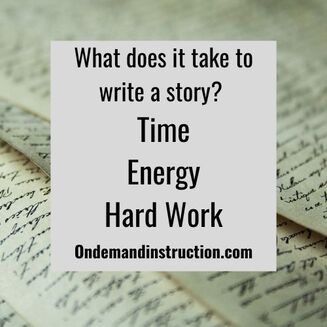
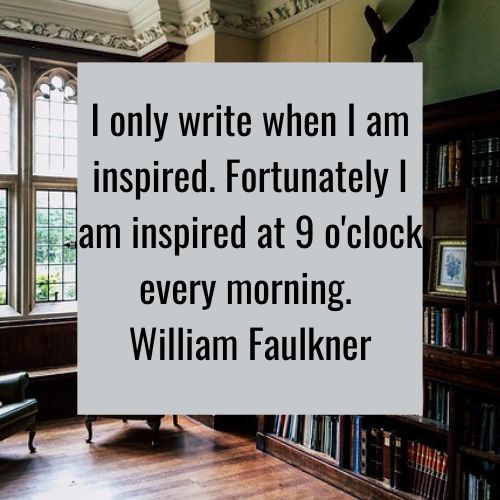
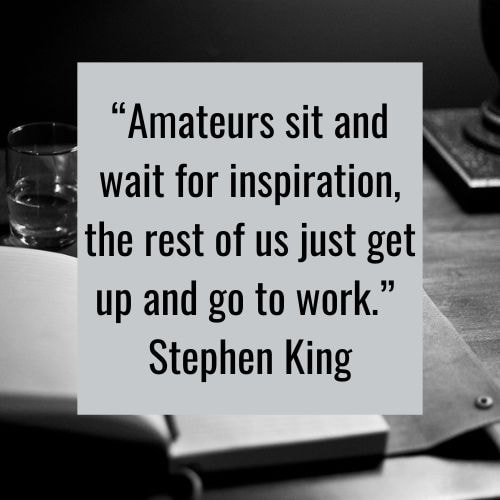
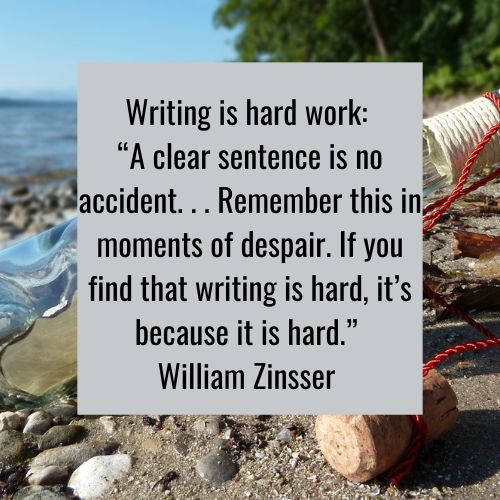

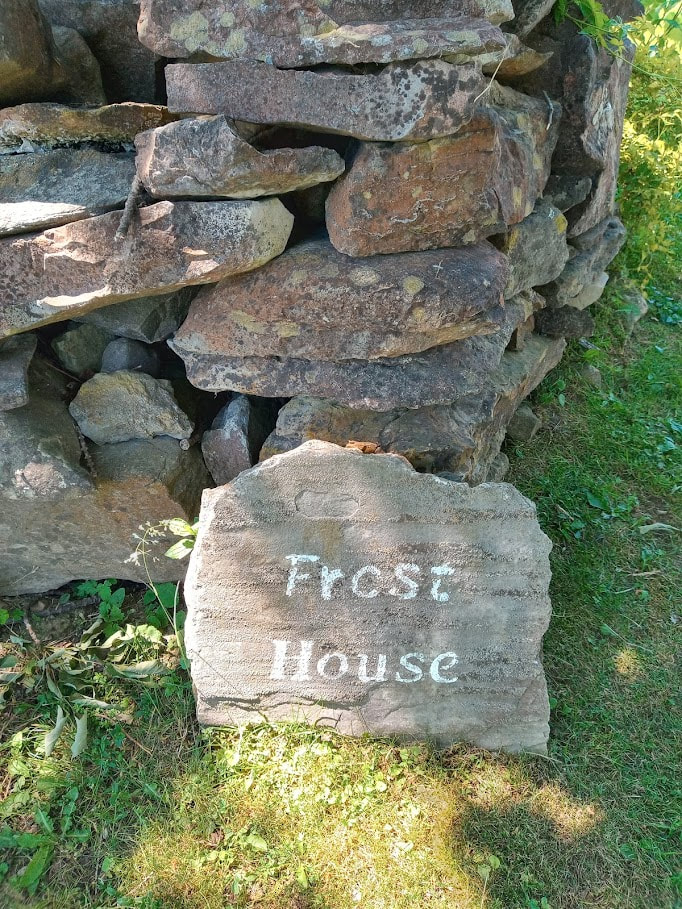
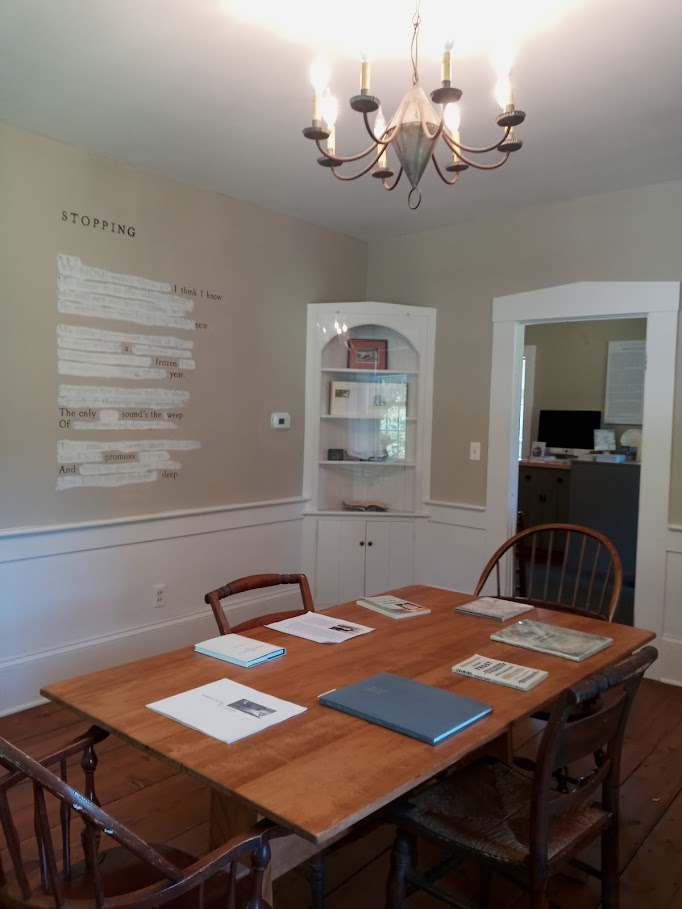

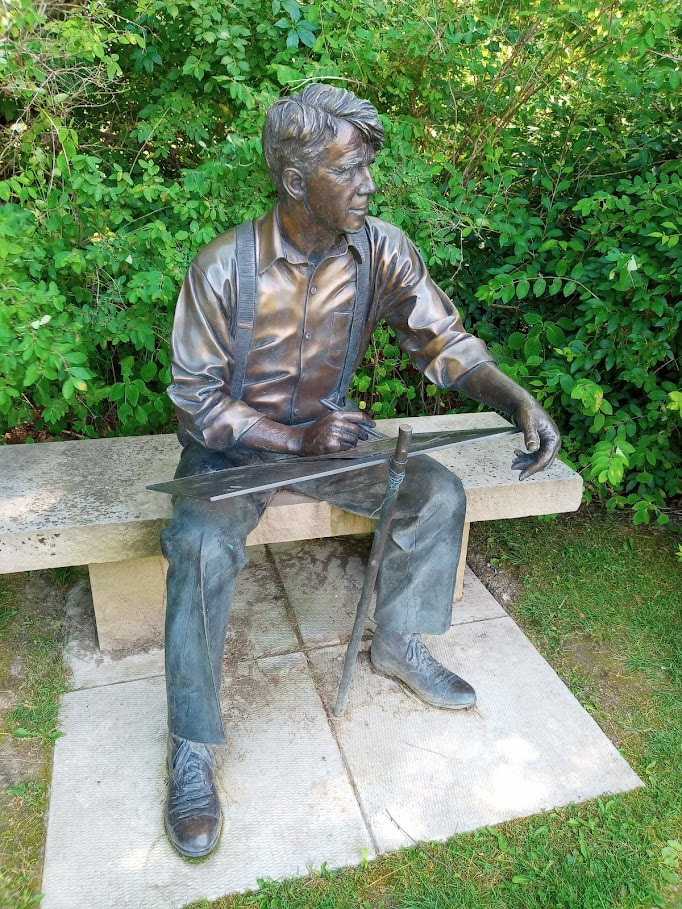
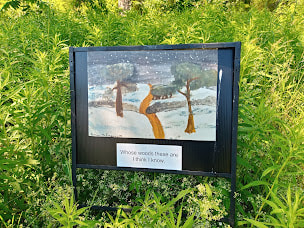

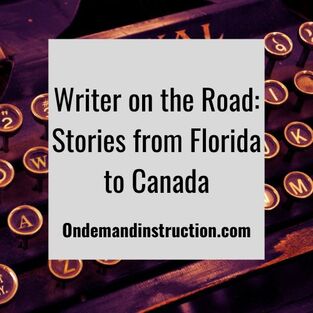

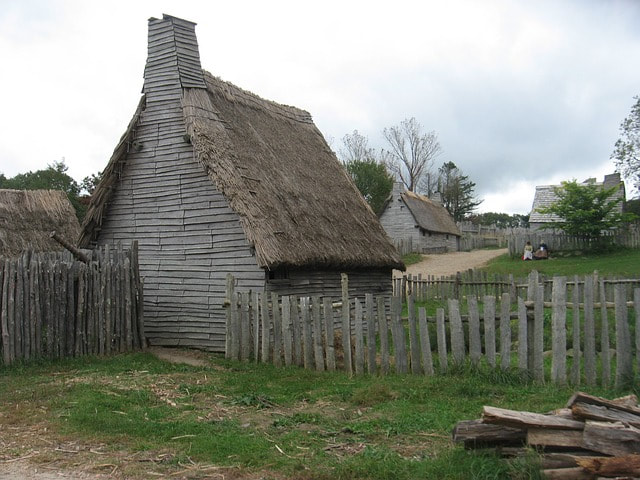



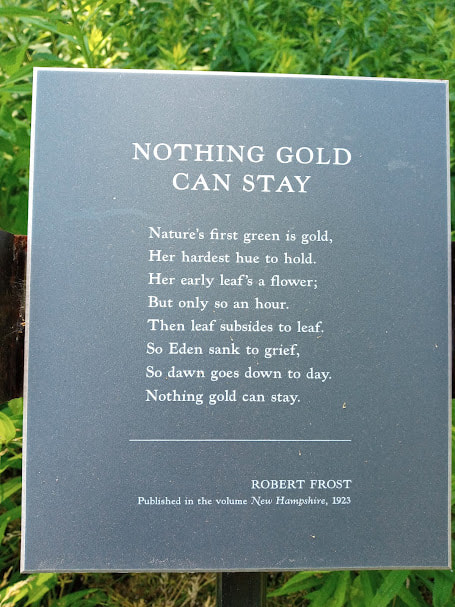
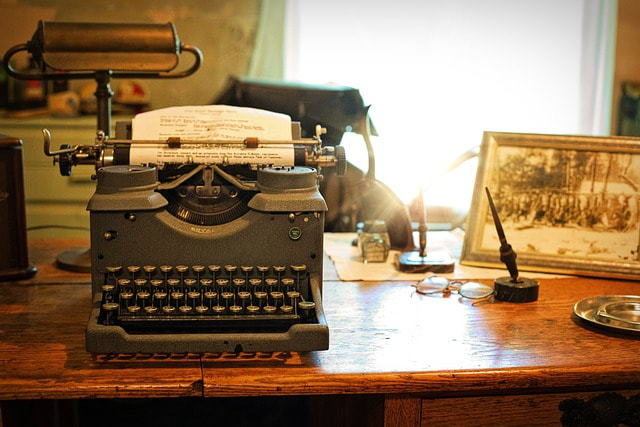




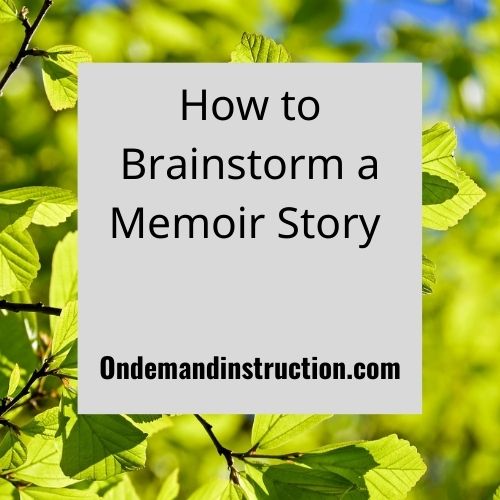




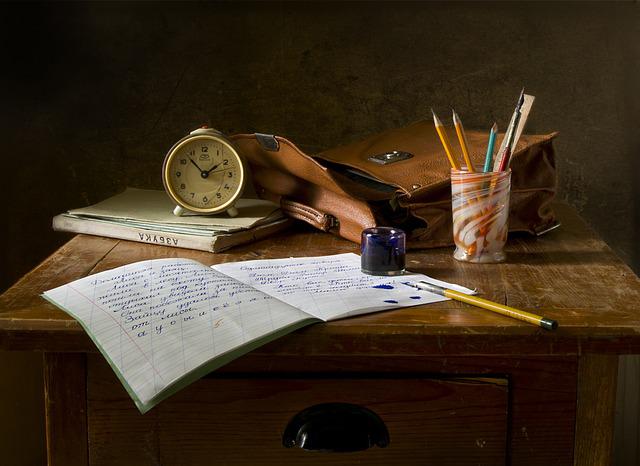

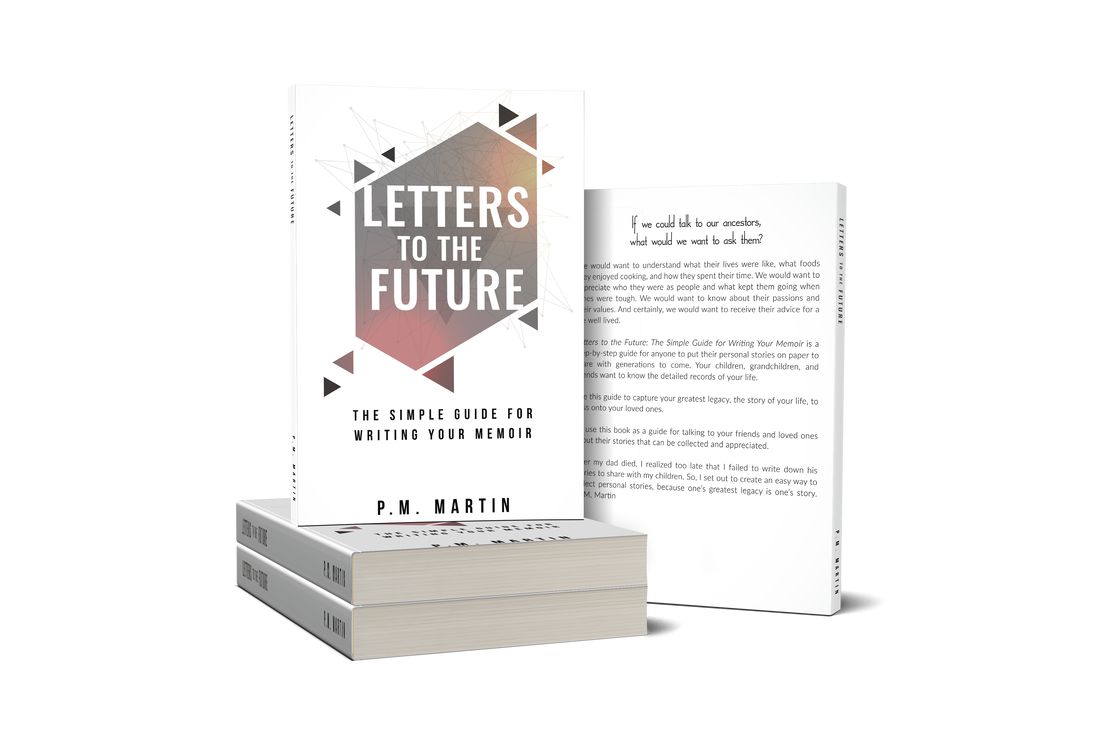
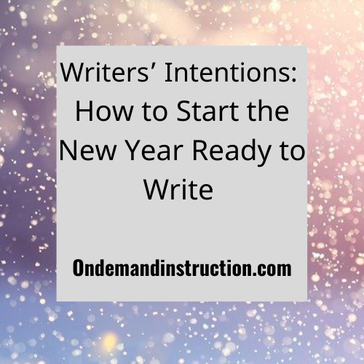


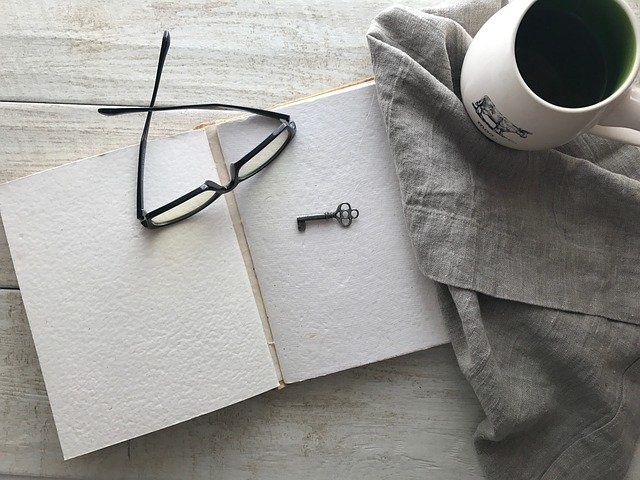
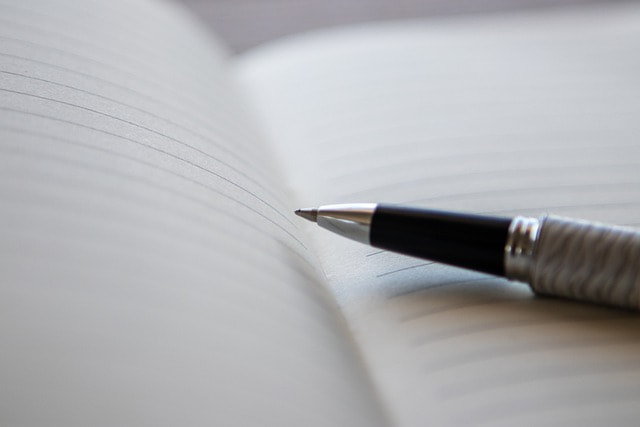

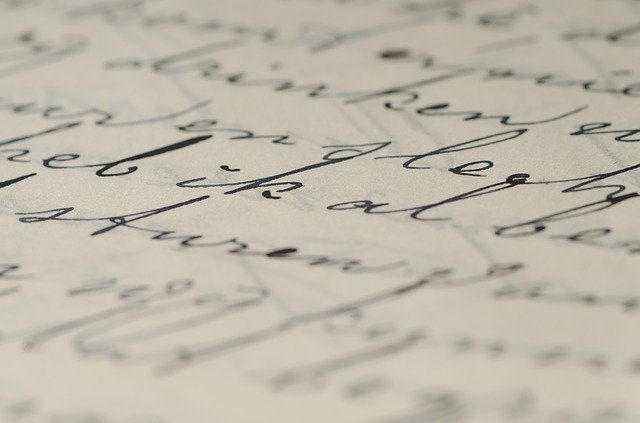



 RSS Feed
RSS Feed